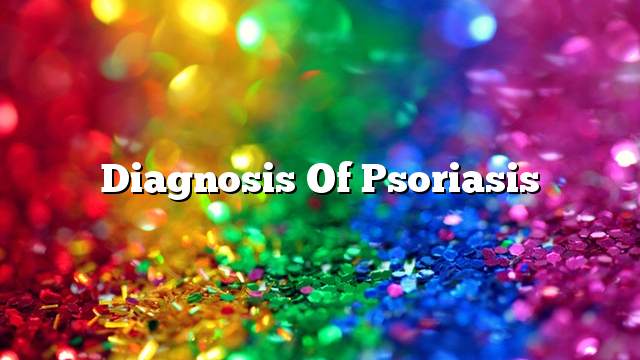General information about psoriasis
- Psoriasis is a chronic, non-contagious skin inflammation that appears in the form of red spots and in the middle of which are silver scales. The most affected areas are the skin of the knees, elbows, scalp and lower back area.
- The disease is spread among light-skinned people in Europe and North America, with an infection rate of 1-3%, and is common in people aged 15-40.
- Parents with psoriasis are more likely to transmit the disease to their children than to infected mothers.
- There are some factors that stimulate the appearance of psoriasis, including: genetic factors in addition to injuries and hormones, and some drugs and infections such as sore throat and AIDS.
- Psoriasis is divided into eight types: psoriasis, psoriasis, psoriasis, psoriasis, psoriasis, psoriasis, and redness.
- Diagnosis of the disease depends on the clinical examination, through red spots with silver scales in the spread areas of the disease.
- Complications of the disease include: psoriatic arthritis, secondary infection, increased risk of lymphoma, and increased cerebrovascular disease.
Diagnosis of psoriasis
Diagnosis depends entirely on the clinical examination, but there are some tests used to diagnose psoriasis, including:
- Biopsy is rarely needed in diagnosis.
- Swab of the larynx to detect inflammation of β-haemolytic streptococci especially in psoriasis psoriasis
- Use skin dashes and nail clippers to rule out fungal infections
- Rheumatoid factor to exclude rheumatoid arthritis
- X-ray normal rays of infected joints.
Treatment of Psoriasis
- Topical treatment with creams such as cortisone, vitamin D derivatives, A, tar and salicylic acid.
- Radiation therapy such as: sunlight, UVB.
- Oral therapy or injections such as: treatment with suralin with UV-A, acetretin, methotrexate, cyclosporin, and biological substances.
- Herbal remedies include cactus, municipal peppers, red peppers, licorice, fenugreek, avocato, Brazilian nuts, chamomile, king beans, and other herbs.
- fitzpatrick’s color atlas and synopsis of clinical dermatology 6th edition
- Dermatology, Fourth Edition By Richard P.J.B. Weller, John A.A. Hunter, John A. Savin and Mark V. Dahl
- emedicine.medscape.com
